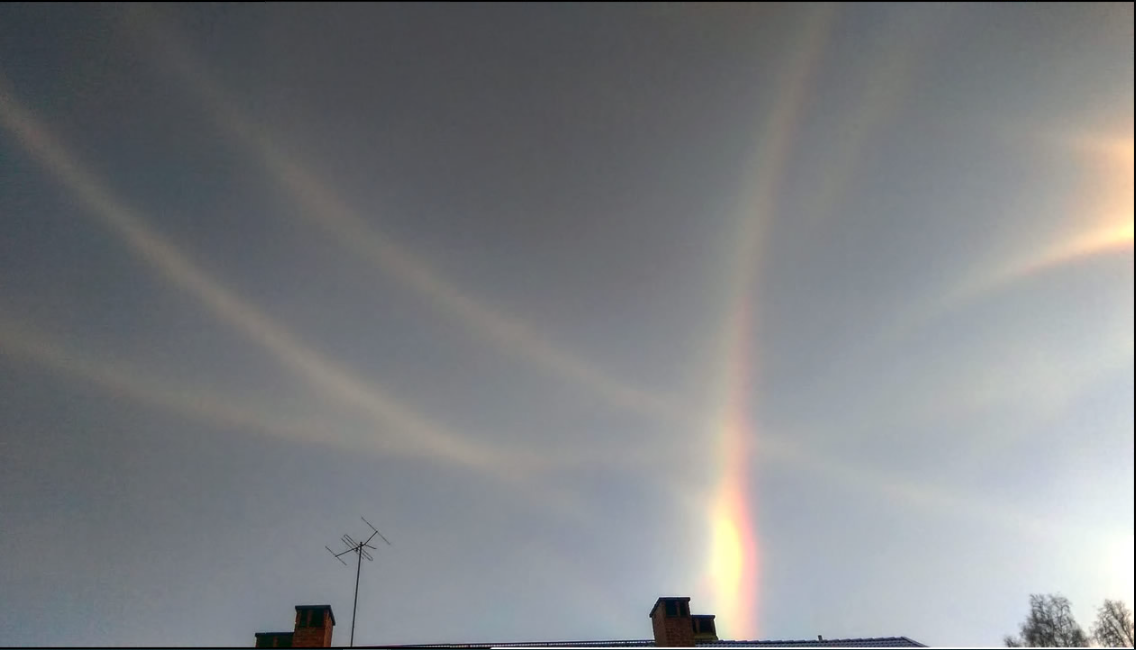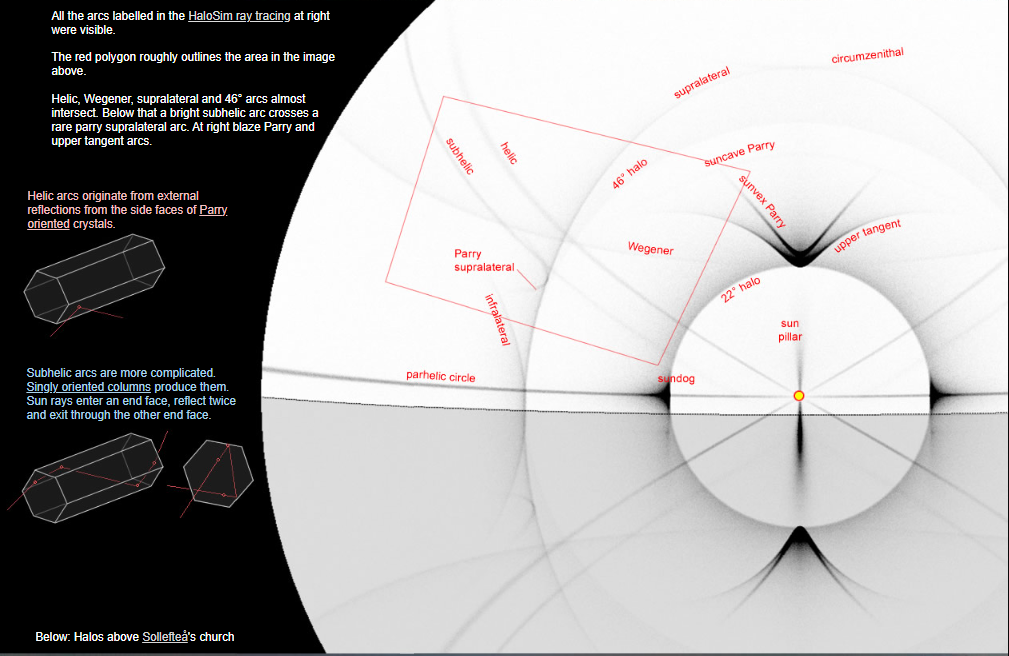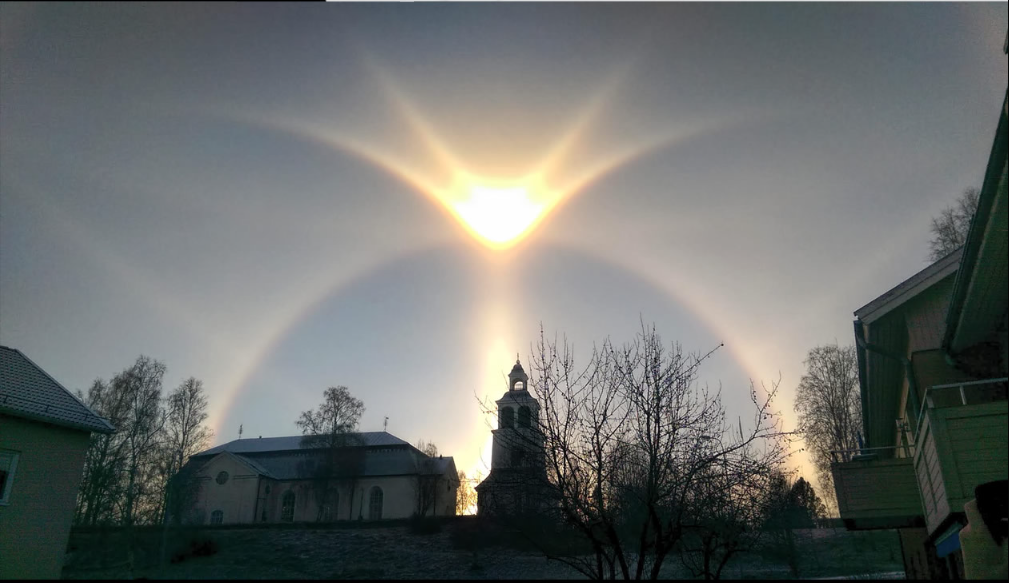Swedish Halos 2 - OPOD
Swedish Halos 2 - OPOD: A Magnificent Display of Rare Ice Halo Arcs
In the enchanting northern town of Sollefteå, Sweden, a breathtaking display of atmospheric optics unfolded on November 23, 2015. Photographer Sofia Andersson captured a mesmerizing scene of rare ice halo arcs known as Swedish Halos. In just one image, Sofia managed to capture at least 10 halos, showcasing the sheer beauty and complexity of this atmospheric phenomenon.
These captivating images, shown with permission from Sofia Andersson, offer a glimpse into the intricate world of ice halos. But what exactly are ice halos, and how do they form? Let's delve deeper into this captivating natural spectacle.
Ice halos are optical phenomena that occur when light interacts with ice crystals suspended in the atmosphere. The intricate arrangement of these crystals creates a stunning display of light refraction and reflection. While halos can form around both the sun and the moon, the Swedish Halos photographed by Sofia Andersson were created by sunlight interacting with ice crystals in the air.
The HaloSim ray tracing diagram provides a visual representation of the different arcs visible in the images. It's fascinating to see how these arcs criss-cross and intersect, forming a magnificent diamond dust display. The red polygon outlines the area captured in the image, emphasizing the density and complexity of the halo arcs.
Among the remarkable halos visible in Sofia's images are the Helic, Wegener, supralateral, and 46° arcs. These arcs almost intersect, creating an awe-inspiring visual spectacle. Additionally, a bright subhelic arc can be seen crossing a rare parry supralateral arc. On the right side of the image, one can observe the blaze Parry and upper tangent arcs, adding further depth to the display.
The Helic arcs observed in these images originate from external reflections from the side faces of Parry-oriented ice crystals. These reflections create a unique and striking arc shape, adding to the overall complexity of the halo display. On the other hand, subhelic arcs are more intricate in their formation. They result from singly oriented columns of ice crystals. Sun rays enter one end face, reflect twice within the crystal, and exit through the opposite end face, giving rise to the distinct subhelic arc.
It's important to note that the article has been automatically converted from the old site and may not appear as intended. However, these captivating images and the accompanying information still offer a fascinating glimpse into the world of atmospheric optics.
The Swedish Halos photographed by Sofia Andersson serve as a reminder of the wonders that exist in our natural world. By capturing these rare ice halo arcs, Sofia has not only provided us with visually stunning images but has also sparked curiosity and fascination about the science behind these atmospheric phenomena. It is through the lens of photographers like Sofia that we can appreciate the beauty and complexity of our atmosphere and gain a deeper understanding of the wonders that surround us.
In conclusion, the Swedish Halos 2 - OPOD images by Sofia Andersson offer a mesmerizing glimpse into the world of rare ice halo arcs. These captivating displays of atmospheric optics highlight the intricate interactions between light and ice crystals suspended in the air. From the Helic arcs originating from external reflections to the subhelic arcs formed by singly oriented columns, each halo arc adds its own unique beauty to the overall display. Through Sofia's photography, we are reminded of the astonishing natural phenomena that exist around us and inspired to explore and appreciate the wonders of our atmosphere.

Tracks in the Sky ~ Rare ice halo arcs criss-cross in a magnificent diamond dust display at Sollefteå northern Sweden. Images by Sofia Andersson on Nov 23,'15. There are at least 10 halos in this image alone. More below and in the previous OPOD.
All images ©Sofia Andersson, shown with permission

All the arcs labelled in the HaloSim ray tracing at right were visible.
The red polygon roughly outlines the area in the image above.
Helic, Wegener, supralateral and 46° arcs almost intersect. Below that a bright subhelic arc crosses a rare parry supralateral arc. At right blaze Parry and upper tangent arcs.

Helic arcs originate from external reflections from the side faces of Parry oriented crystals.
Subhelic arcs are more complicated. Singly oriented columns produce them. Sun rays enter an end face, reflect twice and exit through the other end face.

Note: this article has been automatically converted from the old site and may not appear as intended. You can find the original article here.
Reference Atmospheric Optics
If you use any of the definitions, information, or data presented on Atmospheric Optics, please copy the link or reference below to properly credit us as the reference source. Thank you!
-
<a href="https://atoptics.co.uk/blog/swedish-halos-2-opod/">Swedish Halos 2 - OPOD</a>
-
"Swedish Halos 2 - OPOD". Atmospheric Optics. Accessed on November 25, 2024. https://atoptics.co.uk/blog/swedish-halos-2-opod/.
-
"Swedish Halos 2 - OPOD". Atmospheric Optics, https://atoptics.co.uk/blog/swedish-halos-2-opod/. Accessed 25 November, 2024
-
Swedish Halos 2 - OPOD. Atmospheric Optics. Retrieved from https://atoptics.co.uk/blog/swedish-halos-2-opod/.